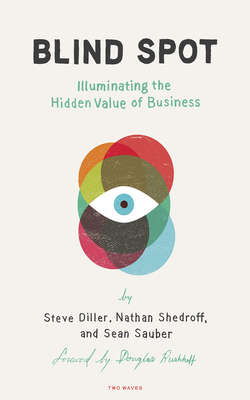Читать книгу Blind Spot - Nathan Shedroff - Страница 13
На сайте Литреса книга снята с продажи.
A New Approach
ОглавлениеThis book offers a solution for building and managing relationships like these, one that’s been deployed successfully in a wide range of contexts. It involves tools and processes that help you accomplish a number of tasks:
• Understanding and visualizing your relationships with customers
• Identifying the best opportunities for innovation (and total value)
• Creating better relationships
With these new tools and processes, you’ll be able to see when and where your customers are having the experiences that create great relationships—and the value that comes with them (and when they’re not). You’ll learn how those customers feel when they first encounter your products or services. You’ll understand how they feel when they buy them or if they regret buying them at all. You’ll understand their reactions to your customer service and ongoing attempts to stay in contact with them. You’ll also have a complete picture of where you interact with people, what happens when you do, and why it matters.
Knowing all this is not merely important in theory. It also provides a strategic foundation for innovating to improve relationships and increasing value for your company. You can turn from being passive and reactive to proactive and helpful. You’ll be able to prioritize opportunities for improvement. You’ll know where to innovate and what to expect from your efforts. And you’ll be able to evaluate your innovation program over time. In other words, you’ll understand and know how to influence your relationships, moving them from your blind spot into plain view.
You’ll also begin to see the impact that your entire organization has on these relationships. They don’t live in product development, customer service, or in the store. They live everywhere, because they’re reinforced (or decreased) by nearly every action the company takes. This new view of relationships will give you a way to strategically tie together the disparate pieces of your organization and focus them on the impact they can have on building long-term value. Too often, one part of the organization is countering the gains of another part because there’s no way to tie them together. Our tools help illuminate these at a strategic level and show how everyone within the organization can contribute to successful relationships (and more value).
At the beginning of this chapter, Comcast was painted in a fairly negative light; however, this company is trying to become more conscious of building lasting relationships. For example, it is creating online tools that enable people to do more for themselves—and thus avoid its harried service reps. This may seem to be an admission of failure, but it’s actually a promising sign. The company is innovating to improve an experience that it knows isn’t great. This is our goal, as well: to describe relationships so that you can innovate to make them better.
This book is divided into two halves. The first half, (Chapters 1–4), describes what relationships are and how they are built. It also introduces a tool called a waveline diagram. It provides a visual representation of relationships, since a picture is worth a thousand words and many more dollars. The second half (Chapters 5–12) looks at an innovation process called becoming by doing. It is a holistic program that touches not only on how to create things that your customers want, but also how to manage relationships inside and outside your company.
Welcome to the new world of relationships. Hopefully, this book will take them out of your blind spot and enable you to understand the value that relationships create for your company. As brand loyalty has fallen and customers have become both more fickle and more savvy, it’s time to start focusing on their real needs and consciously build a relationship with them.
